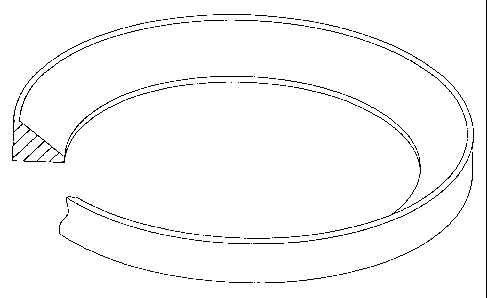Some of the information on this Web page has been provided by external sources. The Government of Canada is not responsible for the accuracy, reliability or currency of the information supplied by external sources. Users wishing to rely upon this information should consult directly with the source of the information. Content provided by external sources is not subject to official languages, privacy and accessibility requirements.
Any discrepancies in the text and image of the Claims and Abstract are due to differing posting times. Text of the Claims and Abstract are posted:
| (12) Patent: | (11) CA 2525678 |
|---|---|
| (54) English Title: | METHOD FOR THE PRODUCTION OF A CONNECTION FLANGE |
| (54) French Title: | PROCEDE POUR FABRIQUER UNE BRIDE D'ASSEMBLAGE |
| Status: | Expired and beyond the Period of Reversal |
| (51) International Patent Classification (IPC): |
|
|---|---|
| (72) Inventors : |
|
| (73) Owners : |
|
| (71) Applicants : |
|
| (74) Agent: | OYEN WIGGS GREEN & MUTALA LLP |
| (74) Associate agent: | |
| (45) Issued: | 2010-02-23 |
| (86) PCT Filing Date: | 2004-03-19 |
| (87) Open to Public Inspection: | 2004-12-09 |
| Examination requested: | 2005-11-14 |
| Availability of licence: | N/A |
| Dedicated to the Public: | N/A |
| (25) Language of filing: | English |
| Patent Cooperation Treaty (PCT): | Yes |
|---|---|
| (86) PCT Filing Number: | PCT/EP2004/002862 |
| (87) International Publication Number: | WO 2004106671 |
| (85) National Entry: | 2005-11-14 |
| (30) Application Priority Data: | ||||||
|---|---|---|---|---|---|---|
|
The invention concerns a method for the production of a connecting
flange.
The object of the present invention is to propose a method with
which the production of an annular connection flange, in particular a
connection flange as is described in DE 101 26 049, is improved and
simplified.
A method for the production of an annular connection flange (L-
flange), wherein the annular flange is produced from an element in the
form of a circular ring and the element in the form of a circular ring is of a
substantially triangular configuration in cross-section (profile).
L'invention concerne un procédé pour améliorer et simplifier la fabrication d'une bride d'assemblage circulaire, notamment une bride d'assemblage telle que décrite dans DE 101 26 049. La présente invention porte également sur la fabrication d'une bride d'assemblage annulaire (bride L), cette bride annulaire étant façonnée à partir d'un élément circulaire, lequel a une section transversale (profil) sensiblement triangulaire.
Note: Claims are shown in the official language in which they were submitted.
Note: Descriptions are shown in the official language in which they were submitted.

2024-08-01:As part of the Next Generation Patents (NGP) transition, the Canadian Patents Database (CPD) now contains a more detailed Event History, which replicates the Event Log of our new back-office solution.
Please note that "Inactive:" events refers to events no longer in use in our new back-office solution.
For a clearer understanding of the status of the application/patent presented on this page, the site Disclaimer , as well as the definitions for Patent , Event History , Maintenance Fee and Payment History should be consulted.
| Description | Date |
|---|---|
| Time Limit for Reversal Expired | 2023-09-21 |
| Letter Sent | 2023-03-20 |
| Letter Sent | 2022-09-21 |
| Letter Sent | 2022-03-21 |
| Common Representative Appointed | 2019-10-30 |
| Common Representative Appointed | 2019-10-30 |
| Inactive: IPC expired | 2016-01-01 |
| Grant by Issuance | 2010-02-23 |
| Inactive: Cover page published | 2010-02-22 |
| Pre-grant | 2009-12-04 |
| Inactive: Final fee received | 2009-12-04 |
| Notice of Allowance is Issued | 2009-11-09 |
| Notice of Allowance is Issued | 2009-11-09 |
| Letter Sent | 2009-11-09 |
| Inactive: Approved for allowance (AFA) | 2009-10-30 |
| Amendment Received - Voluntary Amendment | 2009-04-02 |
| Inactive: S.30(2) Rules - Examiner requisition | 2008-10-02 |
| Amendment Received - Voluntary Amendment | 2007-12-05 |
| Inactive: S.30(2) Rules - Examiner requisition | 2007-06-05 |
| Inactive: Cover page published | 2006-01-24 |
| Letter Sent | 2006-01-20 |
| Inactive: Acknowledgment of national entry - RFE | 2006-01-20 |
| Inactive: Inventor deleted | 2006-01-20 |
| Application Received - PCT | 2005-12-13 |
| All Requirements for Examination Determined Compliant | 2005-11-14 |
| Request for Examination Requirements Determined Compliant | 2005-11-14 |
| National Entry Requirements Determined Compliant | 2005-11-14 |
| Application Published (Open to Public Inspection) | 2004-12-09 |
There is no abandonment history.
The last payment was received on 2010-01-21
Note : If the full payment has not been received on or before the date indicated, a further fee may be required which may be one of the following
Please refer to the CIPO Patent Fees web page to see all current fee amounts.
Note: Records showing the ownership history in alphabetical order.
| Current Owners on Record |
|---|
| ALOYS WOBBEN |
| Past Owners on Record |
|---|
| None |